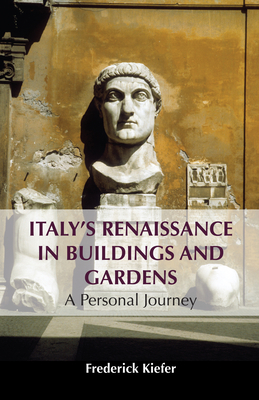You are here
Back to topItaly's Renaissance in Buildings and Gardens: A Personal Journey (Hardcover)
Description
Palaces, villas, and churches. These were
the highlights of my first visit to Italy. I took a lot of photos and looked
forward to sharing them with friends and family. Back home, though, I found
that I didn't recall much about the places that impressed me. Although I had
the benefit of a half-day guide in Rome, Florence, and Venice, I sometimes had
difficulty hearing what was said on crowded streets and busy interiors. The
guides were capable but had only enough time to mention a few major features.
As a rule they skimped on actually describing buildings that intrigued me. And
so they were not especially helpful in providing the insights I wanted. Upon my
return, I found myself wondering: Where did the architects actually find their
ideas? What did they want to accomplish? And what do their choices tell us
about their time? My sojourn in Italy would have been more satisfying if I had
come away with a fuller account of what I had seen. What I most needed was
context. This book supplies that context.
Contemplation of antiquity and the exchange of views among architects released a surge of
intellectual energy not seen for a millennium, a development that would never
have happened so quickly were it not for Johannes Gutenberg's invention of
printing with movable type. This development, in turn, led to architects'
heightened self-awareness of their collective enterprise. They read what their
fellow architects wrote and thereby gained in sophistication. They were no
longer merely masons. They became architects in the modern sense. They took
pride in their achievements and shared a conviction that the visual culture
they created was far superior to that of the previous thousand years.
Their embrace of classical civilization had a visceral urgency. Rome, after all, was
a culture with a storied past, peopled by larger-than-life figures. To learn
what the ancients had created in word or stone could supply a shortcut to
wisdom. And emulating the Romans would provide new models of aesthetic
excellence. This endeavor became known as the Renaissance, or rebirth. The
Reformation, however, changed everything. Martin Luther brought to issue a
quandary: how exactly was Christianity to be reconciled with the pagan past, if
at all? Could one source of inspiration be sustained without compromising the
other? Religious reform questioned the aesthetic achievements of the previous
hundred years. The story of Renaissance architecture represents the effort to
find an accommodation.
About the Author
FrederickKiefer is University Distinguished Professor in the English Department at theUniversity of Arizona, Tucson.
